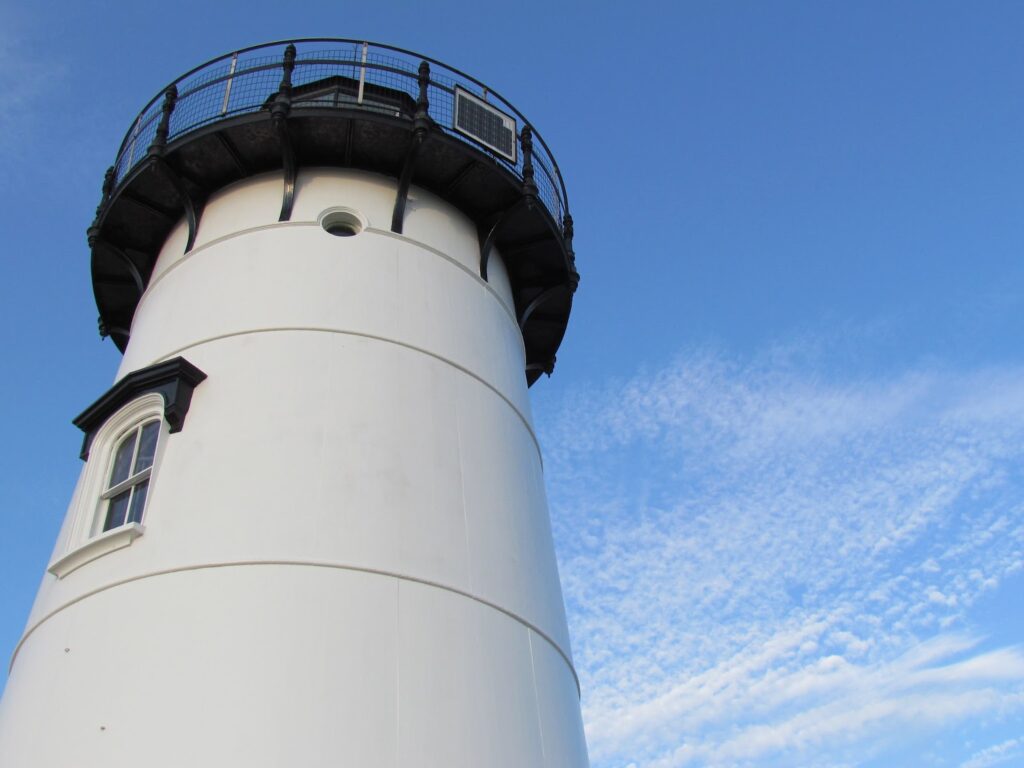
1.
The summer I turned seventeen, I was helicoptered off Martha’s Vineyard to Boston Children’s Hospital due to a Crohn’s flare. Strapped in next to a tiny porthole punched with blue sky, my dad seatbelted beside me, I felt a thrill of adventure despite the stomach pain that had claimed me for three days. First on the couch while my family packed for our Martha’s Vineyard vacation. Then, curled up in our dark green minivan, then ferry, then minivan again. And finally, in a strange bed, then hospital bed, then here, on a helicopter gurney floating 10,000 feet above the Atlantic, my mom and siblings abandoned on the island growing smaller below us.
2.
Martha’s Vineyard was first discovered by two white men who probably knew nothing of our modern gastrointestinal diseases, but did know something of starvation, of bodies shucked to their cores, like mine was in 2007. I flared and stopped eating for days, my body a collection of sticks, one that people first commented on with appreciation, then stared at for a beat too long. I wanted to tell them they were wrong. That it wasn’t an eating disorder, but instead, chronic inflammation of my small intestine. How my insides were so irritated, so scarred, so exhausted, food barely scraped itself through.
3.
One of the colonizers of Martha’s Vineyard, Bartholomew Gosnold, named it for his daughter and the island’s many vines. I don’t remember any vines. All I remember is the Easter yellow of my bedroom in our rented house, the gauzy curtains dancing in the ocean breeze, the window’s mouth thrown open in a scream. Downstairs, my siblings’ bare feet slapped against the hardwood, their laughs dying in their mouths as they crept past my room. The bathroom stood twenty steps away from my bed, each step hauling my sixteen-year-old body against the tide, the water thrashing, determined to keep me curled up on the mattress like the suffering creature I’d become.
4.
The island was originally inhabited by the Wampanoags, who called it Noepe, meaning “Dry Land amid Waters.” It is a land amid waters, small and cut off from Massachusetts and the world, a 20-mile splotch floating in the Atlantic. It’s so small, the island’s hospital couldn’t determine if my appendix was about to burst or if my Crohn’s had worsened, even after sliding my body through a CT machine. By then, I was a right angle, the pain in my stomach sharp and throbbing. The ferry’s too slow, the doctor said to my parents, their faces pinched with worry. Plus, look at her. She can barely walk.
5.
In the 1700s, Martha’s Vineyard flourished as a whaling center, the whales’ blubber peeled from their bodies, then boiled and rendered into oil. When the paramedics strapped me to a gurney and hoisted me into the back of a helicopter, the whirring was louder than the ocean. Was this how the whales felt, harpooned and strapped to the sides of the whalers’ ships? Two years after my helicopter trip, I’d be back in Boston, body splayed on an operating table, intestines unspooled and snapped from the rest. Boil those intestines down and make me into a candle like the whales, please. I’d like to be useful. I’d like all of this to be worthwhile.
6.
By the late 1800s, kerosene was discovered and the whales lost their value. Martha’s Vineyard shifted from a whaling center to a tourist destination, the wealthy captain mansions dotting the shore converted into inns and B&Bs, the island’s purpose shifting like the tides. I’d like to say that Martha’s Vineyard was witness to my worst Crohn’s flare, but that would be a lie. Illness comes and goes as it pleases.
Horizontal in the helicopter, the opioids finally started to kick in. I watched my dad grin and point as we flew over Fenway. When we landed on the roof of Boston Children’s Hospital, the paramedics slid me out of the helicopter and rolled me across the concrete toward the elevator. There was a swarm of people now—paramedics, doctors, nurses, my dad—all of their mouths wide open, yelling things I couldn’t hear. Everyone was talking and vertical on that roof, everyone but me. I’d like to say that I felt surrounded, helped, loved. But in the middle of the flare? You feel like the only person in the world—you are an island, your pain untouchable and unknowable to everyone but you.
Karissa Venne is a writer who lives in Western Massachusetts with her wife and their epileptic kitten. She received her MFA from The New School and works as a senior media editor in Psychology at Macmillan Learning. Her work has appeared in Okay Donkey, Fairlight Books, Sonder Magazine, among others. Find her online at @kvenne717 and karissavenne.com.
Image Credit: Flickr Creative Commons/David Berkowitz



Very nicely done. AIM HIGH. NO HIGHER! AND DONT WAIT.
WRITE AND FINISH AN OUTLINR OR DRAFT TODAY!
YOU GOT IT … THE IT… you got It kid.
Don’t dare waste it!
SVG
I love the way you relate the island’s history to yours — great structural device! I don’t mind telling you that I had some (minor) belly responses to your ordeal. Fabulous story telling!
So beautifully written! I love the personalized, story-like feel.
Absolutely beautiful 🌼🌺🌸
Loved this and wanted more!
Beautiful!